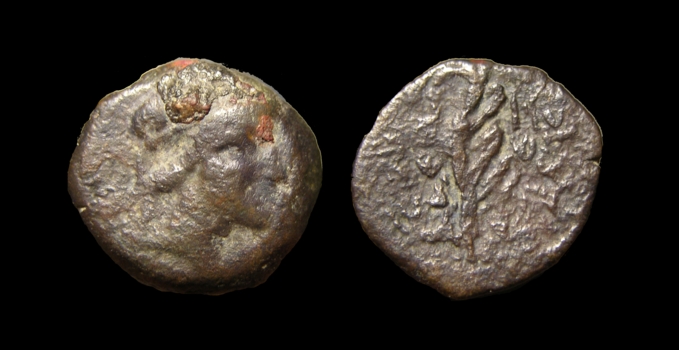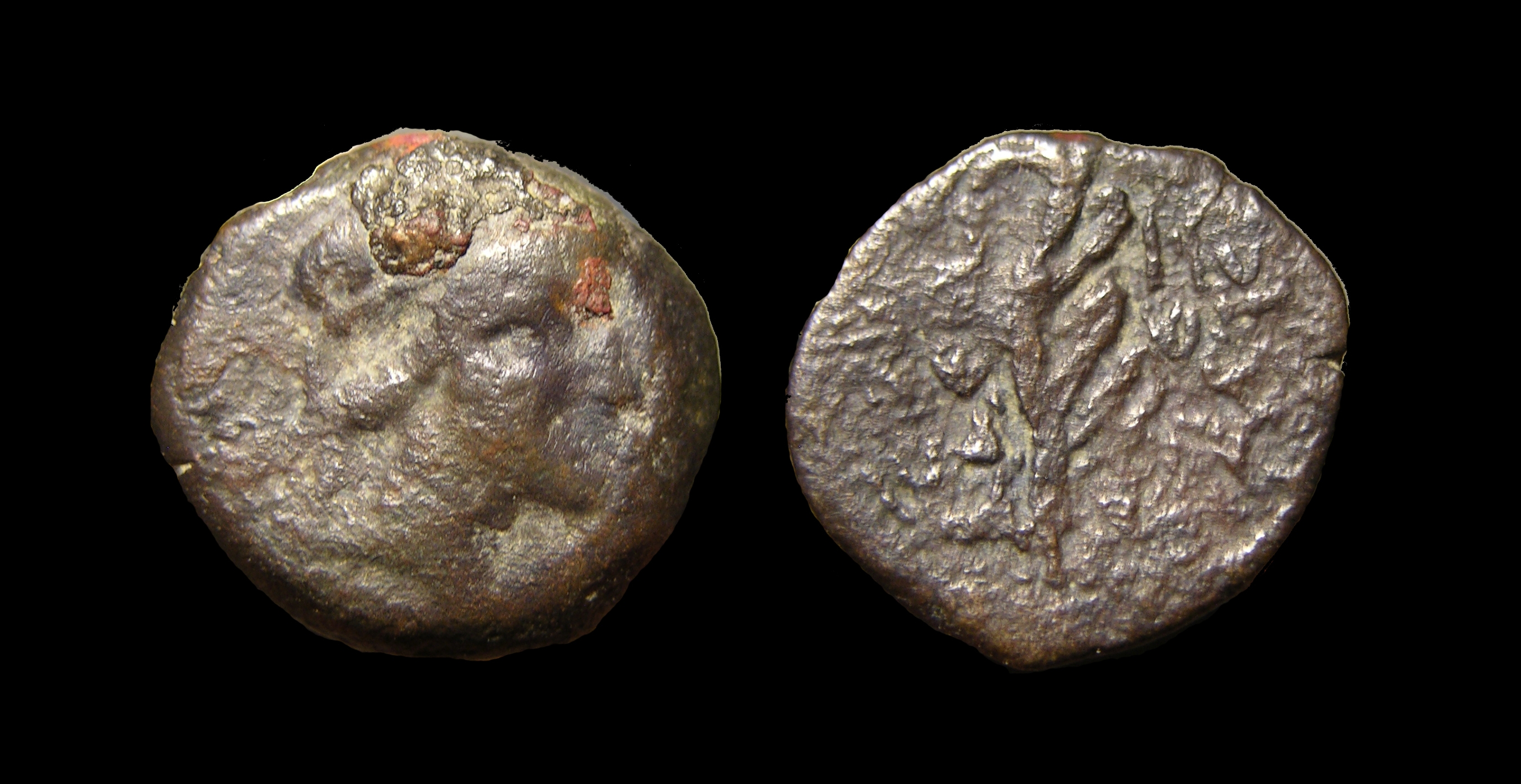 Hover to enlarge
Hover to enlarge

Alexander I
Mint: Ascalon
Year 164, 149/148 BC
Obvs: Head of Alexander right.
Revs: BACIA on left, AΔEΞ on right, Asphlaston between. Mintmark ACK outter right, year ΔΞP outter left.
AE 12x13mm, 1.31g
$0.00
Order # G 282
Ref: SC 1849.1; HGC 9, 946(R2)
NFS
